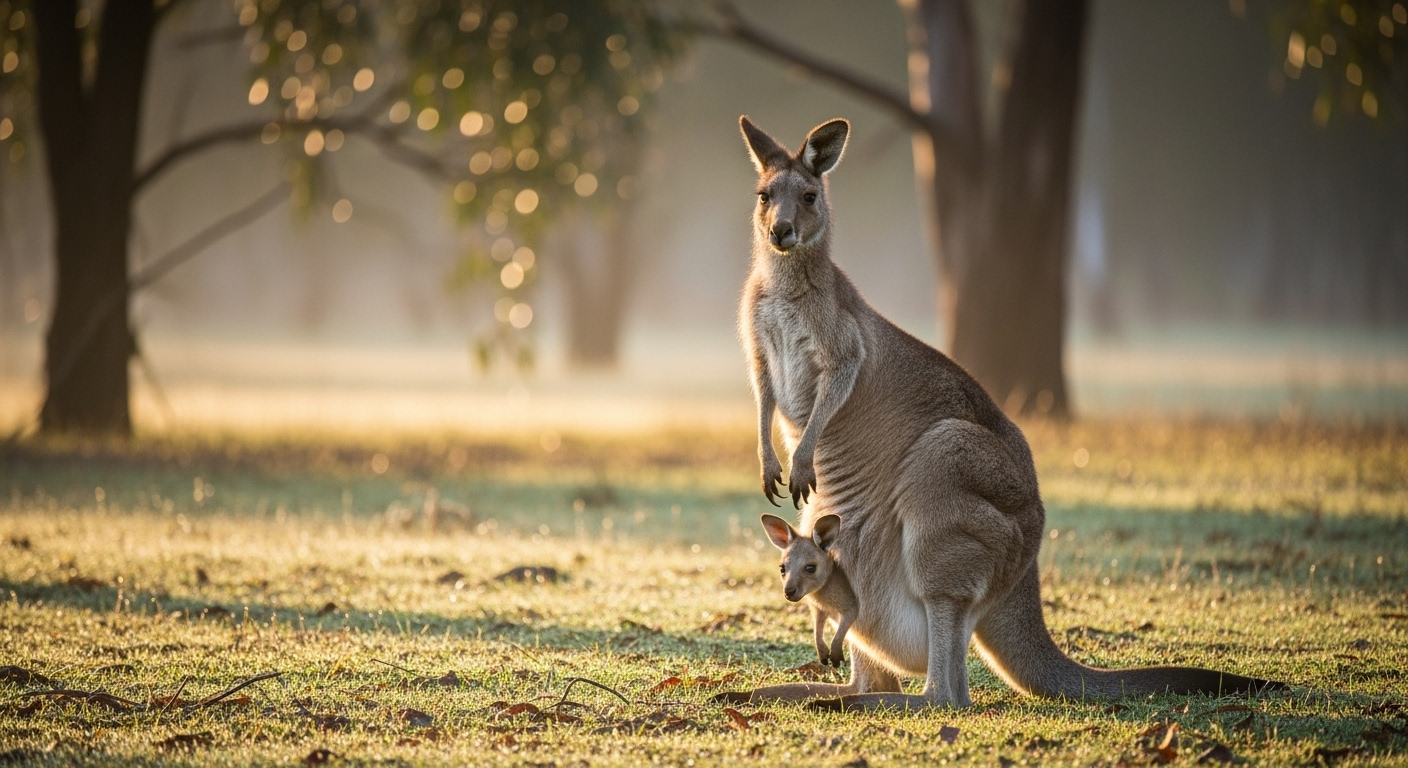The Surprising World of Marsupial Parenting
Marsupials, those unique mammals with built-in baby pouches, have long fascinated scientists and animal lovers alike. While kangaroos and koalas might be the poster children for this diverse group, the world of marsupial parenting extends far beyond these iconic species. From tiny sugar gliders to the carnivorous Tasmanian devil, these remarkable creatures employ a range of ingenious strategies to nurture their young. This article delves into the lesser-known aspects of marsupial child-rearing, revealing the extraordinary adaptations and behaviors that ensure the survival of their species.

The Marsupial Advantage: Early Birth and Extended Care
Marsupials have a distinct advantage when it comes to reproduction. Unlike placental mammals, marsupials give birth to extremely underdeveloped young after a very short gestation period. This strategy allows the mother to invest less energy in pregnancy while still providing extensive care to her offspring. The newborn, often no larger than a bean, must then make a perilous journey to the mother’s pouch, where it will continue to develop for months or even years.
This unique approach to reproduction has several benefits. It allows marsupials to adapt quickly to changing environmental conditions, as mothers can pause or resume embryo development based on resource availability. Additionally, the extended period of pouch-rearing enables young marsupials to learn crucial survival skills from their mothers before venturing out on their own.
Specialized Pouches: Nature’s Perfect Nursery
The marsupial pouch is far more than a simple carrying case for young. These specialized structures are marvels of biological engineering, tailored to the specific needs of each species. For instance, the wombat’s pouch faces backward, preventing dirt from entering as the mother digs burrows. Koalas have a muscular sphincter at the pouch opening, which keeps their young secure as they climb trees.
Some marsupials, like the yapok or water opossum, have waterproof pouches that allow them to swim and dive while keeping their young dry. The complexity of these pouches extends to their internal environment, with temperature regulation mechanisms and specialized glands that produce antimicrobial secretions to protect the vulnerable young from infections.
Milk Production: A Customized Nutrition Plan
Perhaps one of the most remarkable aspects of marsupial parenting is their ability to produce different types of milk simultaneously. This adaptation allows mothers to nourish young at various stages of development concurrently. For example, a kangaroo can produce protein-rich milk for a newborn joey in her pouch while also producing higher-fat milk for an older joey that has left the pouch but still returns to nurse.
This specialized milk production is not just about quantity but quality as well. The composition of marsupial milk changes dramatically over the course of lactation, adapting to the changing nutritional needs of the growing young. This level of customization in infant nutrition is unparalleled in the animal kingdom and plays a crucial role in the rapid development of marsupial offspring.
Social Learning and Extended Care
While the pouch is the most recognizable feature of marsupial parenting, the care doesn’t end when the young emerge. Many marsupial species engage in extended periods of parental care and social learning. Kangaroos, for instance, continue to nurse their young for several months after they leave the pouch, and joeys often stay with their mothers for up to 18 months, learning essential skills for survival.
This extended period of care and learning is critical for species that face complex environmental challenges. Young Tasmanian devils, for example, spend months learning hunting and scavenging techniques from their mothers before striking out on their own. This intensive period of education ensures that the next generation is well-equipped to face the challenges of their environment.
Conservation Challenges and the Future of Marsupials
Despite their remarkable adaptations, many marsupial species face significant conservation challenges. Habitat loss, introduced predators, and climate change pose serious threats to these unique mammals. Understanding the intricacies of marsupial parenting is crucial for conservation efforts, as it allows researchers and wildlife managers to develop more effective breeding and reintroduction programs.
Recent innovations in marsupial conservation include the development of artificial pouches for orphaned joeys and specialized milk formulas that mimic the changing composition of natural marsupial milk. These efforts, combined with habitat protection and predator control programs, offer hope for the future of these extraordinary creatures.
In conclusion, the world of marsupial parenting is a testament to the incredible diversity and adaptability of life on Earth. From their specialized pouches to their customized milk production, marsupials have evolved a suite of parenting strategies that are both fascinating and effective. As we continue to unravel the mysteries of these remarkable creatures, we gain not only a deeper appreciation for the wonders of nature but also valuable insights that may help us protect and preserve these unique species for generations to come.





